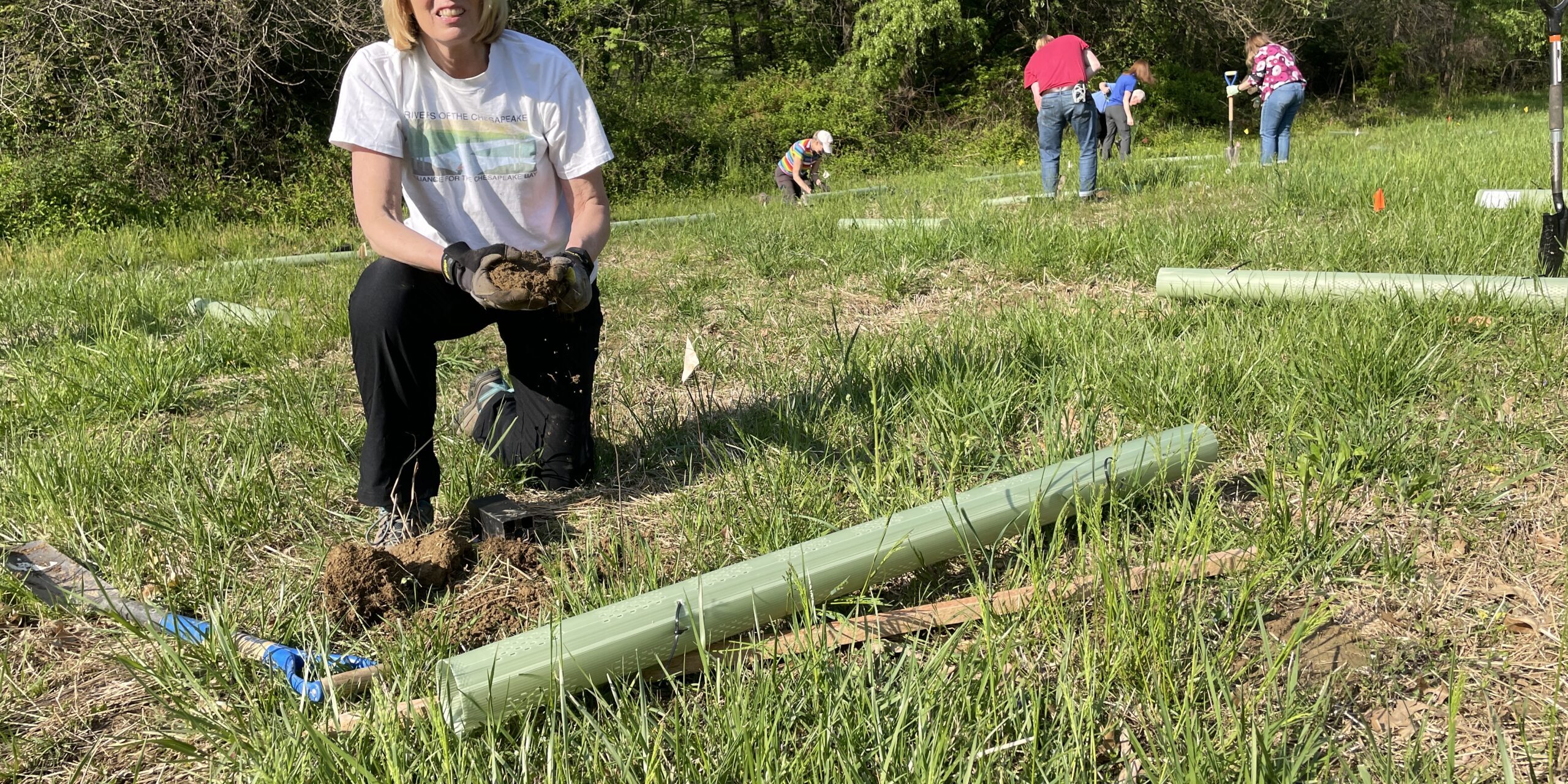October 17th, 2022
By Cindy Adams Dunn

At the start of my career, I worked as an environmental educator and leader of Pennsylvania’s emerging efforts to improve the quality of its rivers and streams that flowed to the Chesapeake Bay. Then, just as now, I could be found along waterways in the dirt planting trees with colleagues and volunteers.
Since that time, very heavy precipitation and flooding have increased significantly in Pennsylvania, and that is expected to continue. When it rains, pollution and the impacts of people on the land are washed into our water affecting its quality and the aquatic life and people downstream.

Turns out planting trees, especially along streams, is a big part of the solution.
Across the commonwealth we are seeing a growing understanding and interest in planting trees as a natural solution to many issues — for climate resilience, improving water and air quality, and helping with flooding.
For all these reasons we join partners in October to celebrate Riparian Buffer Month to acknowledge the incredible benefits that planting trees along waterways provide.
Watershed Forestry in Pennsylvania
For more than seven years, the Department of Conservation and Natural Resources (DCNR) has been leading an effort to protect and restore buffers along streams (known as riparian areas) with the help of other state agencies and many, many external partners.
We’ve grown a 10-person Watershed Forestry team in our Bureau of Forestry focused on providing technical assistance, engaging partners, and planting buffers. DCNR has given out millions of dollars in grant funds to non-profit and community partners to do the same.
Our collaborative efforts have positioned us for scaling up our work to meet large goals for streamside buffers with new federal and state dollars that are becoming available for this best management practice.
We continue to work toward long-term, sustainable funding to give our partners some predictability to expand workforce capacity for all the landowner engagement, growing, planting, and maintaining needed to restore forests along waterways.

Streamside Buffer Successes Inspire Action
During my time as DCNR secretary I have had the great fortune to participate in a number of buffer planting events that — beyond the number of acres planted — tell the story of the successes we are having. They include:
- Listening to farmer Roger Rohrer talk about the evolution in agriculture toward planting buffers for soil health, wildlife and pollinator habitat, and to leave a legacy while we planted trees with legislators on the Chesapeake Bay Commission in Lancaster;
- At fruit grower Knouse Foods in Adams County installing a buffer while hearing about how improving water quality and converting lawn to meadows helps them meet sustainability goals attractive to the corporations they supply their products to; and
- Growing the next generation of conservationists planting trees with the students at Shallow Brook Intermediate School in York highlighting how any type of landowner with a stream on their property can make a difference.
I’m so thankful for the many professionals and volunteers doing this restoration work for our waters and our lands.

Every year of my adult life I have made it a personal goal to plant at least one tree as a symbol of action for nature and our planet, and hope for its future.
If you can do one thing for during Buffer Month, plant a tree! (Especially along a stream, but in your backyard or community is great, too.)
And don’t forget to take advantage of the vast opportunities for outdoor recreation that exist near and within Pennsylvania’s rivers and streams. Go fishing. Rent a kayak. Hike along a rail trail. Visit a state park. When you connect with these resources, you’ll remember why we work to protect them.

Cindy Adams Dunn is the secretary of the Pennsylvania Department of Conservation and Natural Resources, where she not only advocates for streamside buffer restoration and climate action, but also oversees a dedicated staff that manages state parks and forests and provides grants for community recreation and conservation. Find more information on the DCNR website or follow the department on social media.



